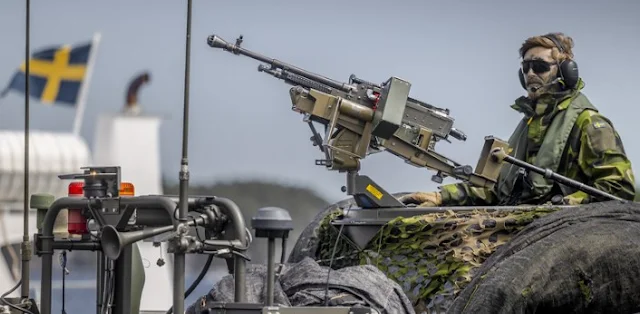 |
| Finland Plans to Allow NATO to Deploy Nuclear Weapons in the Border with Russia |
Helsinki - Finland made a surprising move by opening up opportunities for NATO to deploy nuclear weapons in the country's territory bordering Russia. This move could risk angering Moscow. Permission to place dangerous weapons is very possible if Finland's application to join NATO is approved. The country and Sweden already submitted requests to join NATO in May, in response to Russia's invasion of Ukraine.
According to Iltalehti's report, the draft law (RUU) on potential NATO membership to be submitted by the Finnish government to Parliament does not include an option not to use nuclear weapons. Speaking to the newspaper, defense sources said the Finnish Minister of Foreign Affairs and Defense; Pekka Haavisto and Antti Kaikkonen, committed to NATO in July that they will not seek national restrictions or reservations if the Helsinki application is accepted. Foreign policy insiders told Iltalehti that this meant NATO nuclear weapons could transit through, or be based on, Finnish territory.
In addition, there is no limit to establishing a NATO base in the country. The US already has about 100 nuclear weapons in Europe, stationed in Belgium, Germany, Italy, the Netherlands and Turkey. The data is according to the Federation of American Scientists. Britain and France, both members of NATO, also maintain their own independent nuclear arsenals. Earlier this month, the Polish government said it had held discussions with the US government about hosting US nuclear weapons, although this has not been confirmed by Washington.
Polish President Andrzej Duda claims there is a potential opportunity for his country to get involved in NATO's "nuclear sharing" program. According to its website, NATO is a nuclear alliance that uses its nuclear arsenal to maintain peace, deter coercion and deter aggression. The importance of a nuclear deterrent was confirmed in NATO's 2022 Strategic Concept, which the alliance adopted at the Madrid summit in June.
NATO Secretary General Jens Stoltenberg welcomed applications for membership from Finland and Sweden in May, describing the move as a historic moment for the alliance. "I warmly welcome Finland and Sweden's request to join NATO," he said. “You are our closest partner. All allies agree on the importance of expanding NATO. We all agree that we must stand together, and we all agree that this is a historic moment that we should seize on. This is a good day at a critical time for our security."
The NATO application by Finland and Sweden has been approved by 28 country Parliaments from the alliance's 30 member states. Only Hungary and Turkey have yet to vote. The main stumbling block is Turkey, where Ankara has said it will only approve new NATO members for both Finland and Sweden if they suppress Kurdish separatists, who it considers terrorists.
Speaking on October 1, Turkish President Tayyip Erdogan said: "We will maintain our principled and determined stance on this issue until the promises made to our country are kept." NATO is currently conducting a nuclear drill, called "Steadfast Noon", which began on October 17 and will continue until October 30. The exercise involved about 60 aircraft, including US B-52 bombers capable of carrying nuclear weapons. Separately, Finnish seismologists recorded a series of five underwater explosions on Thursday and Friday, the origins of which are unclear.
